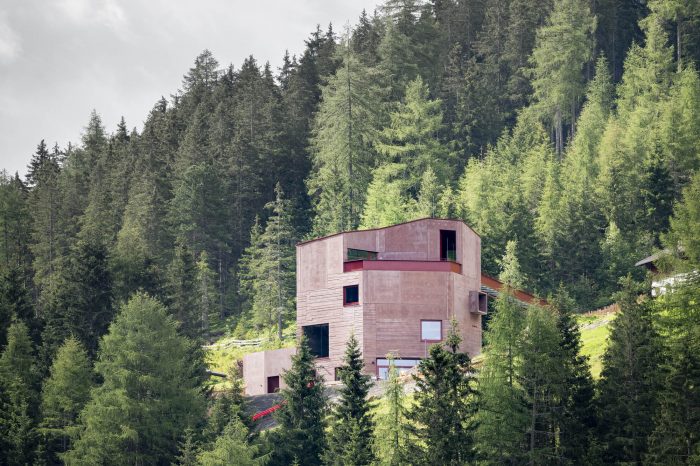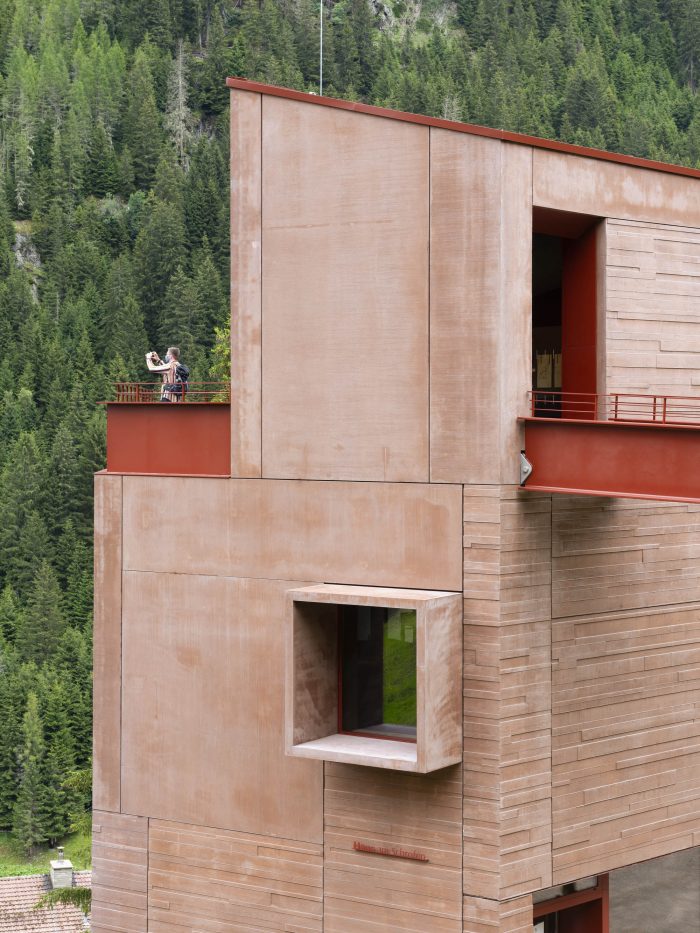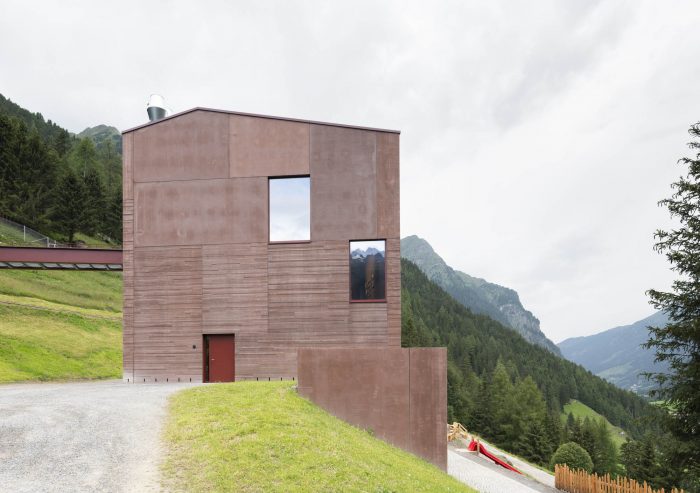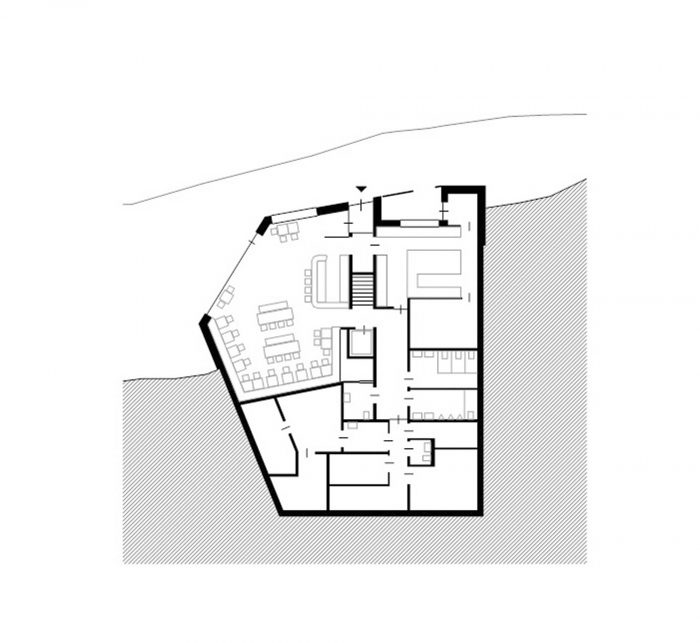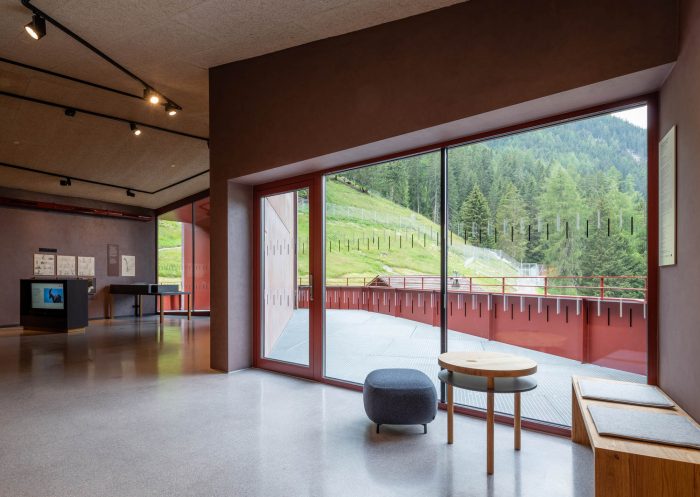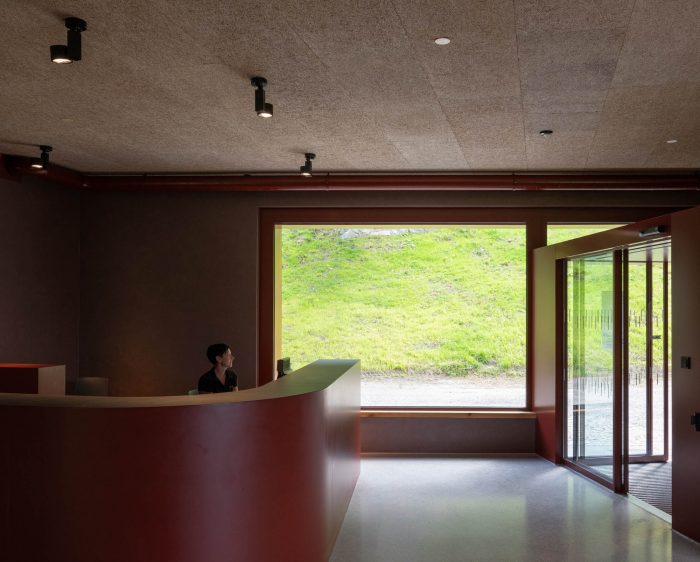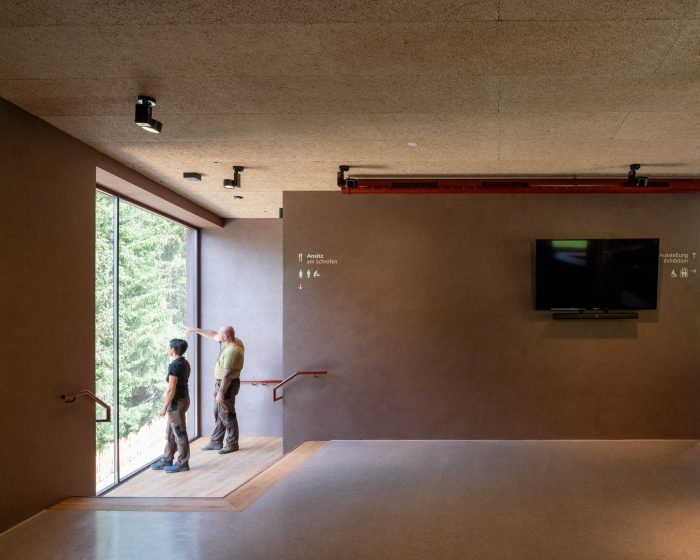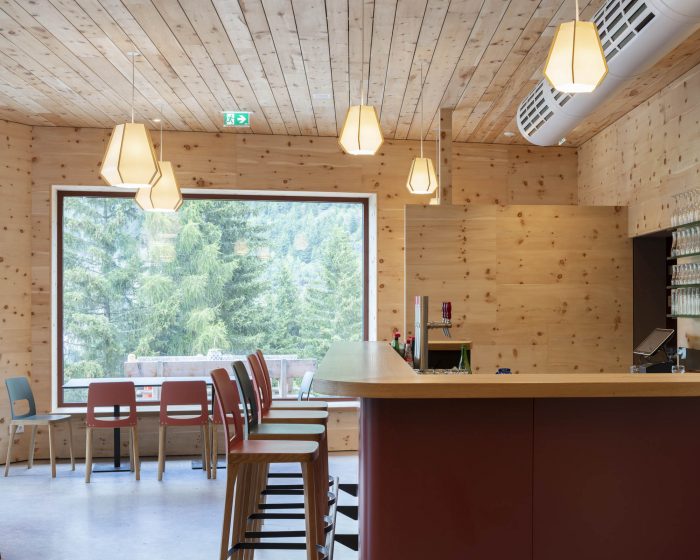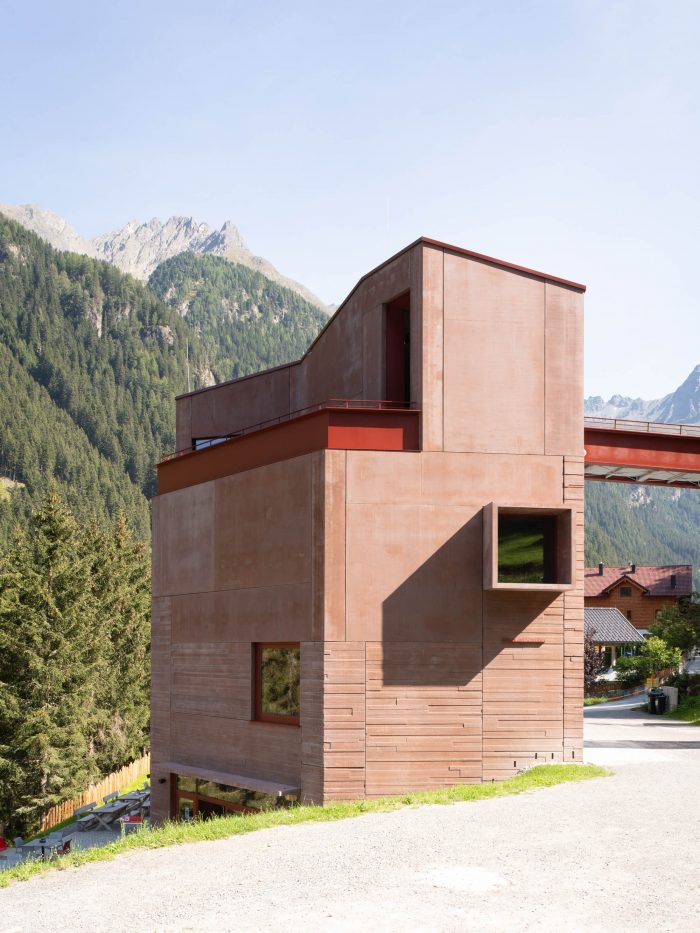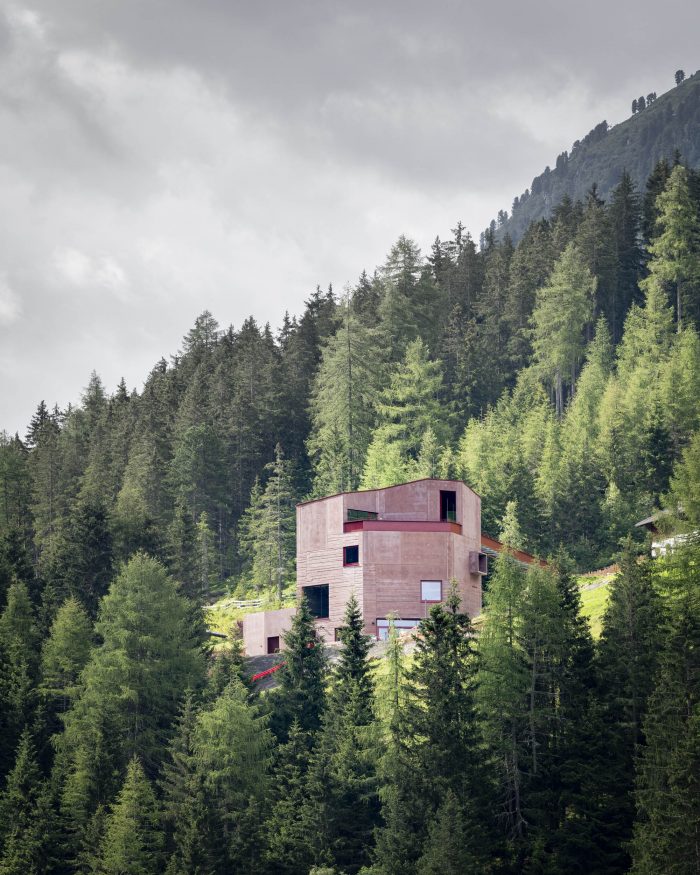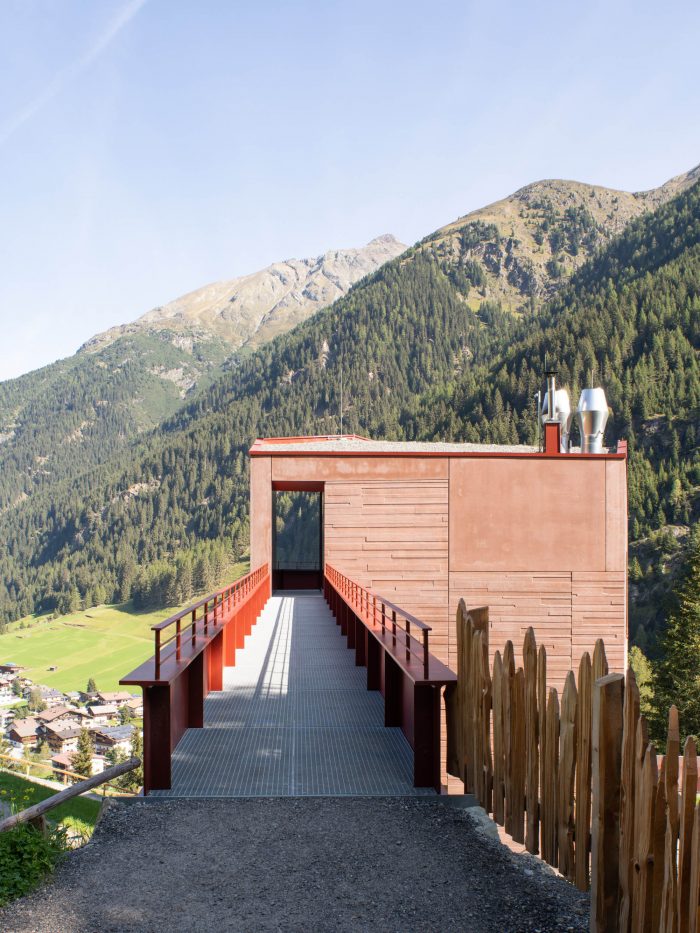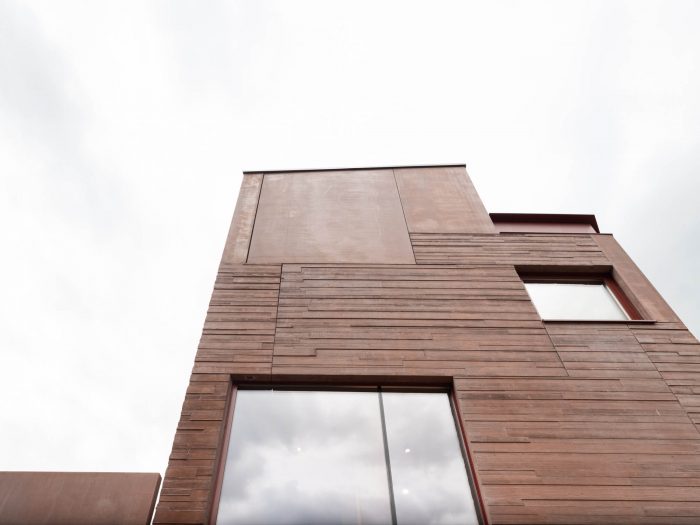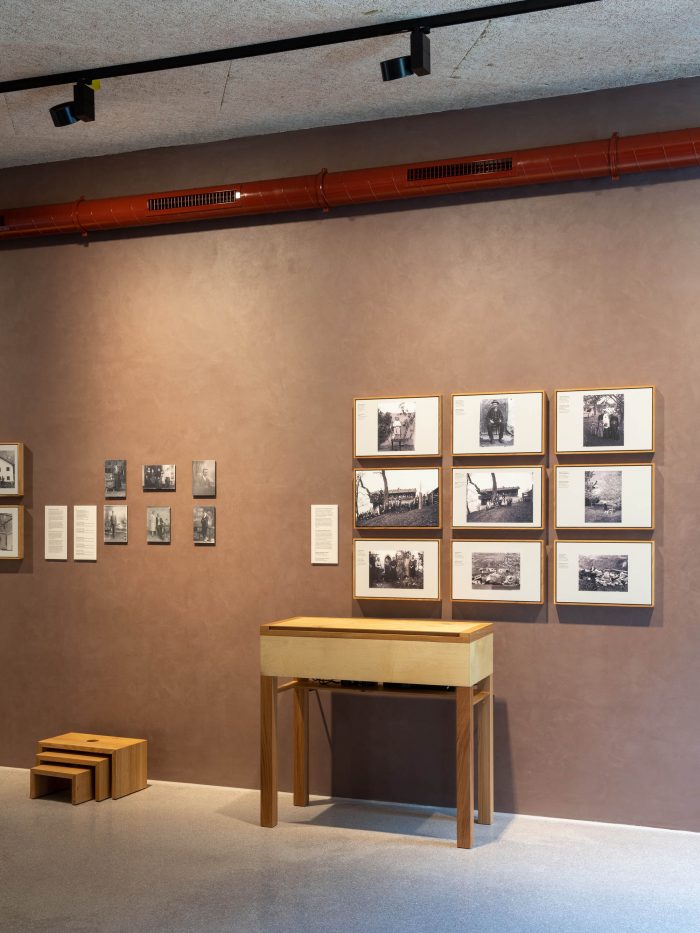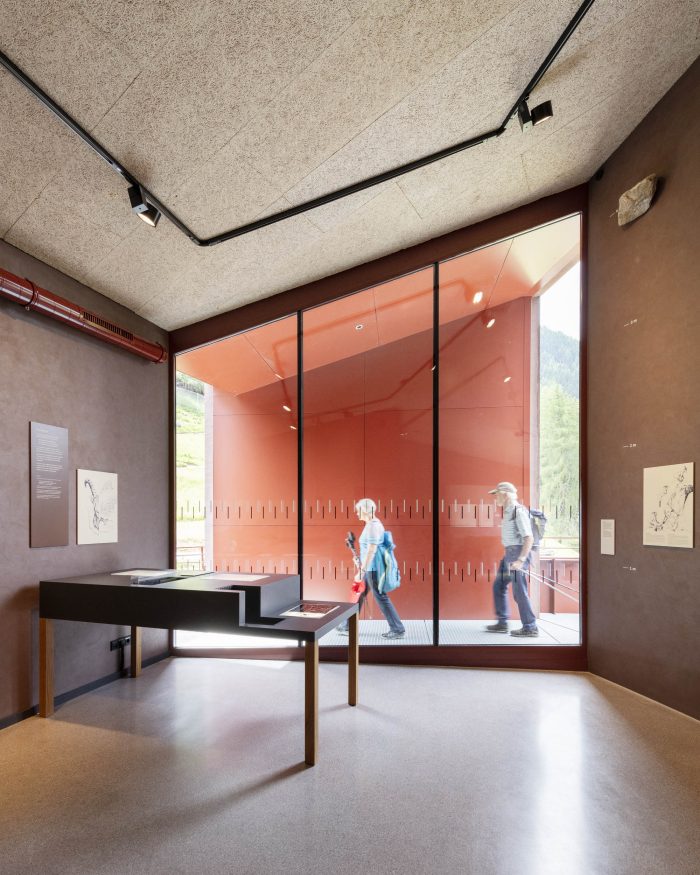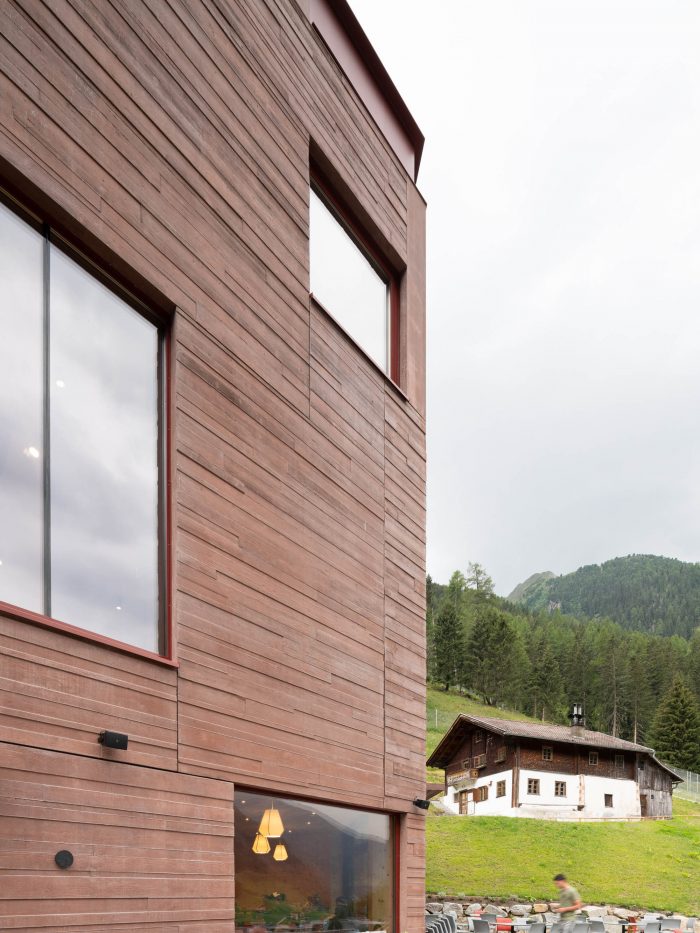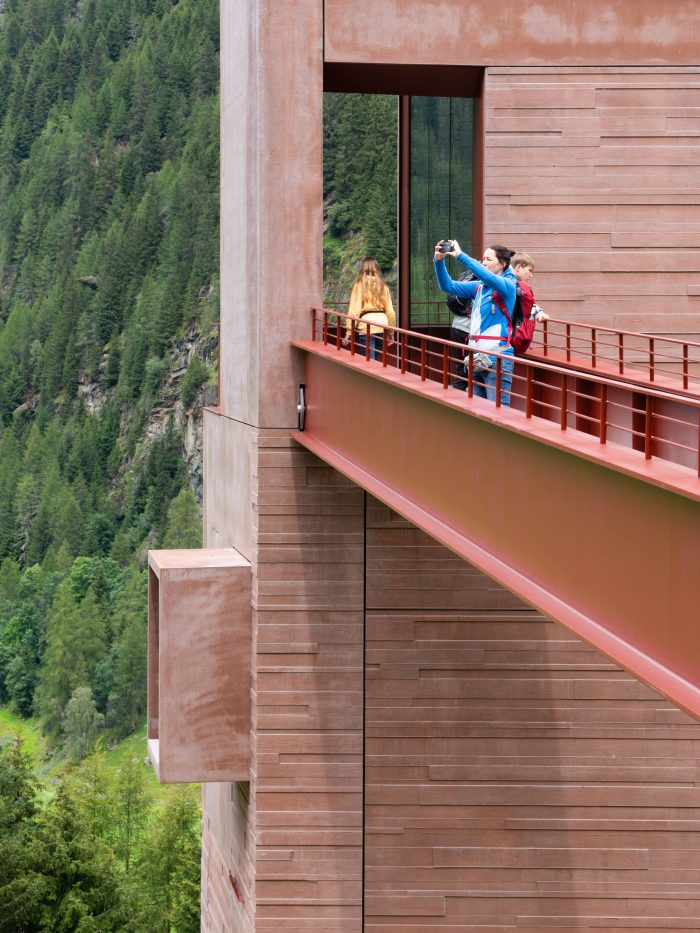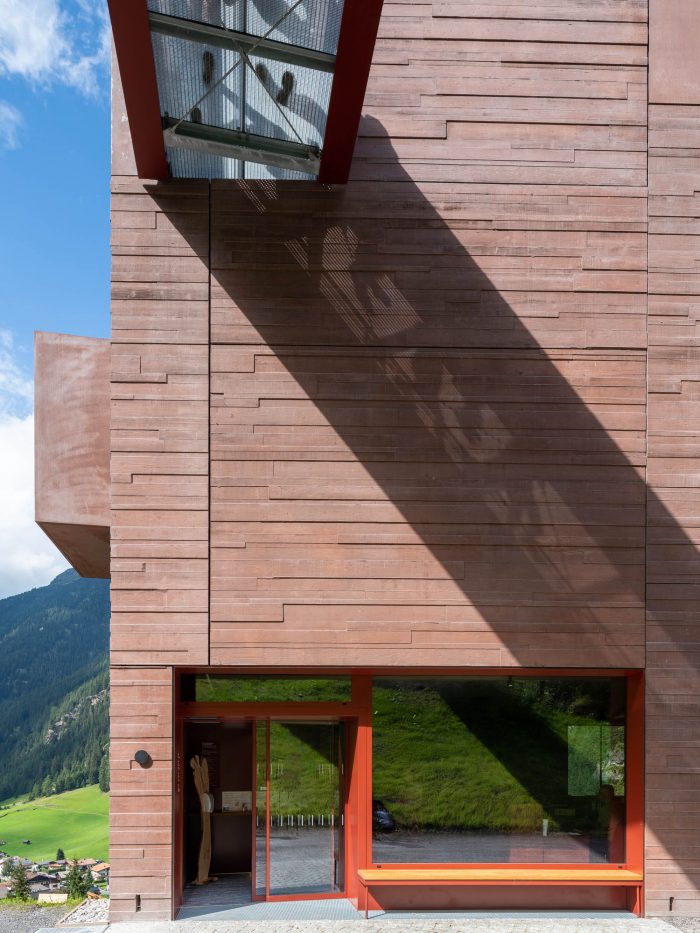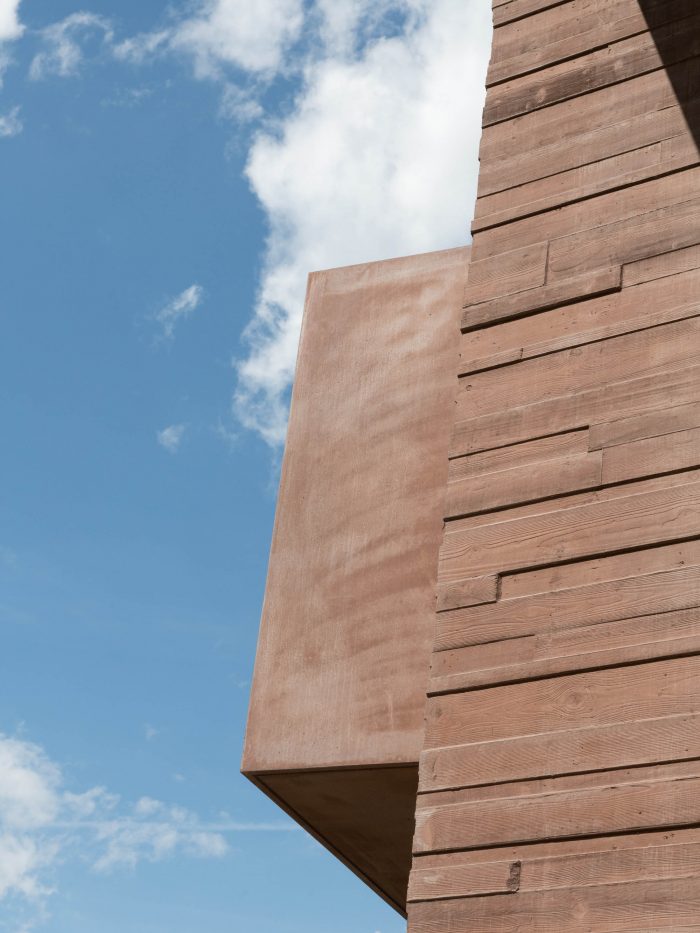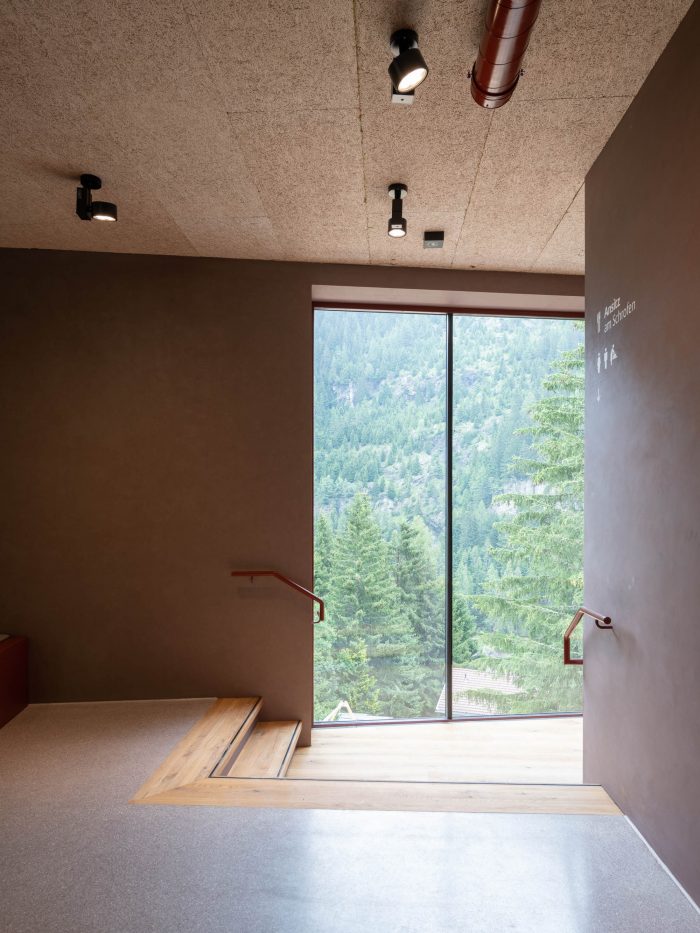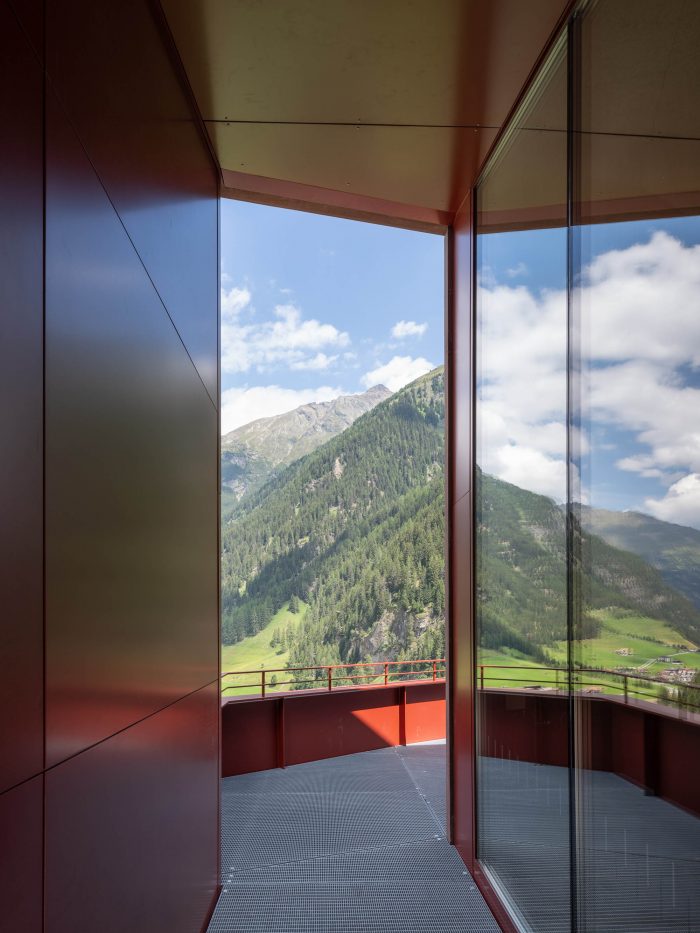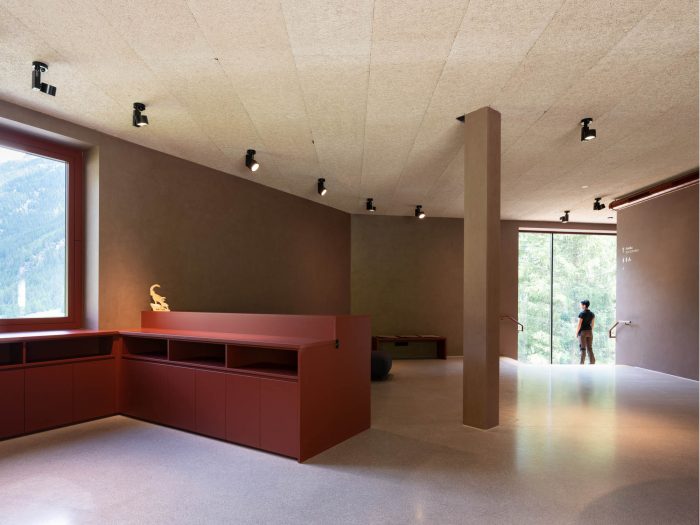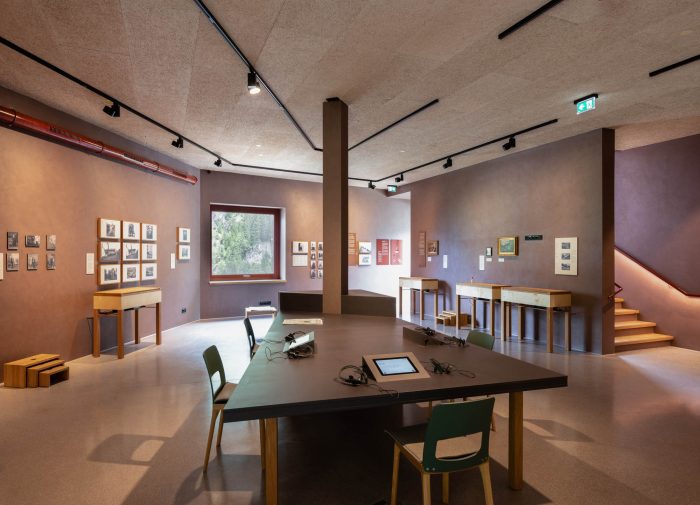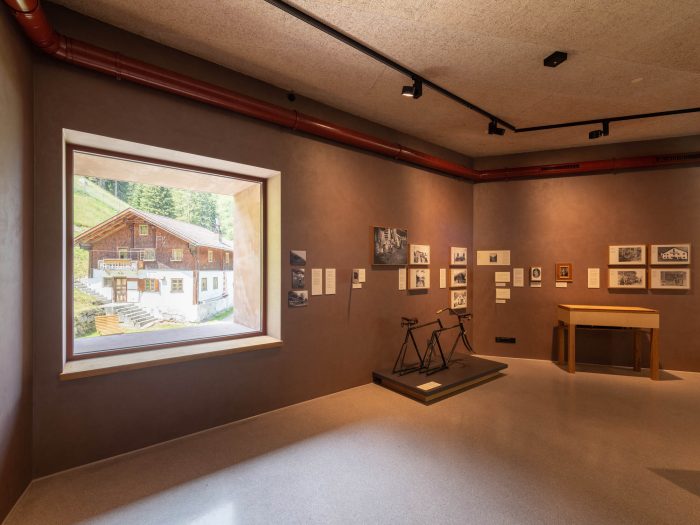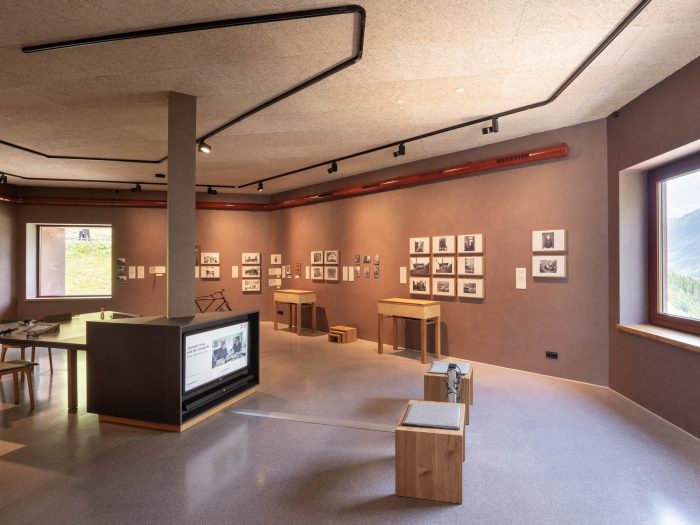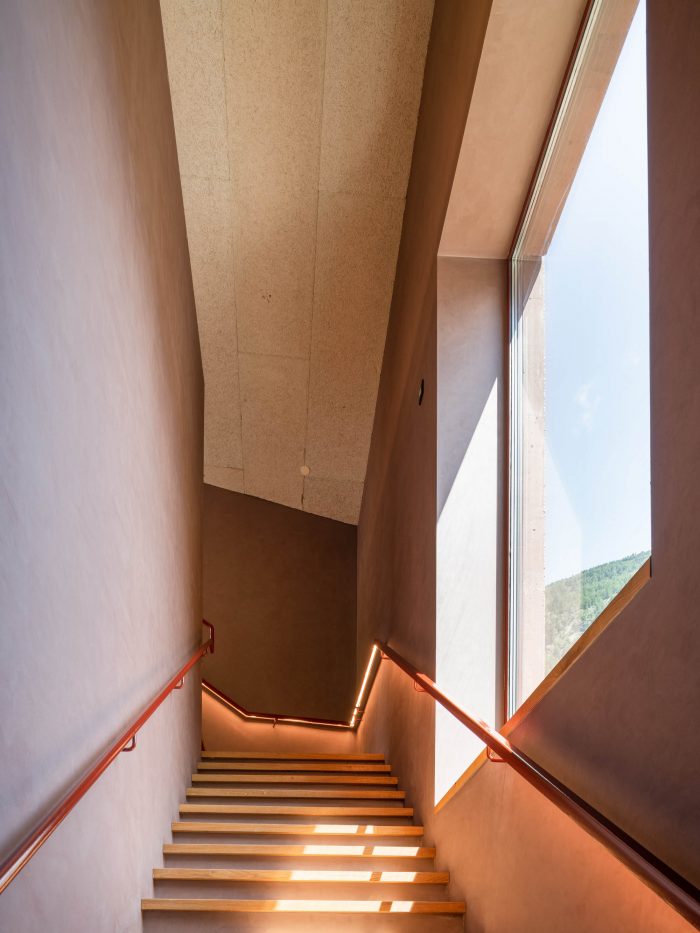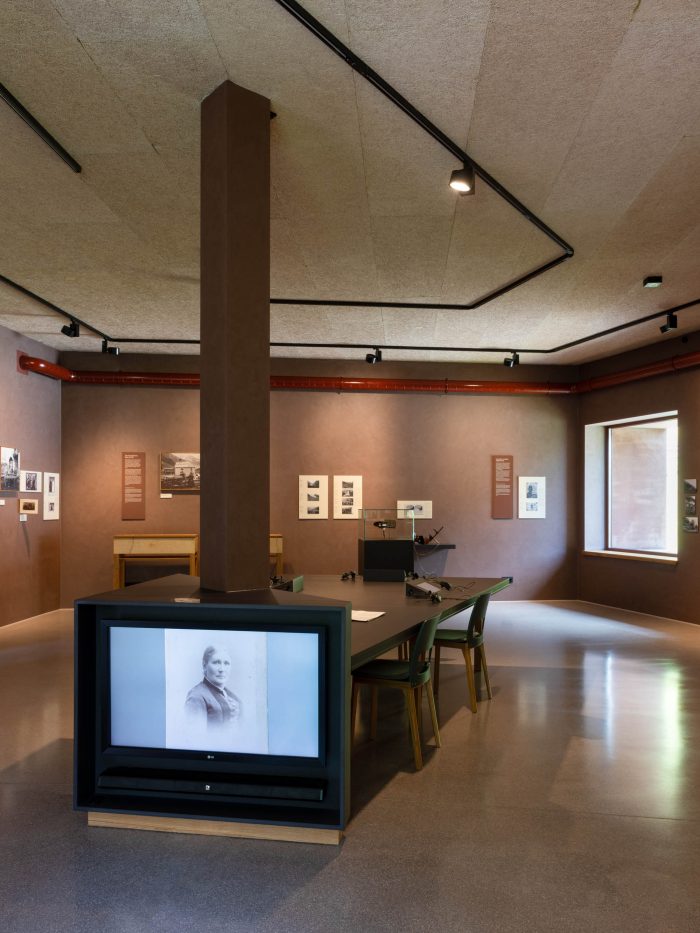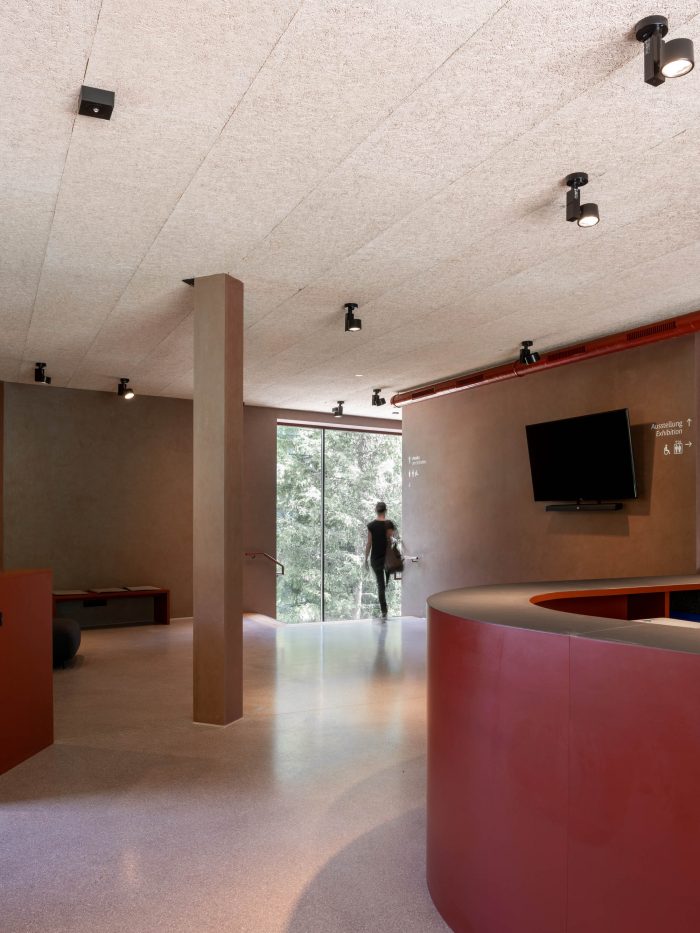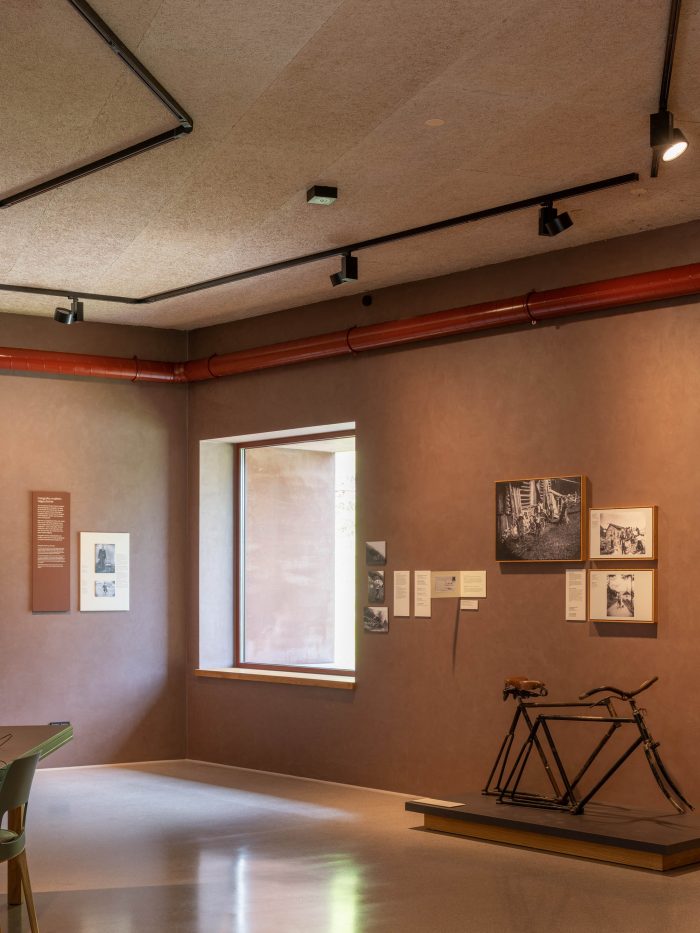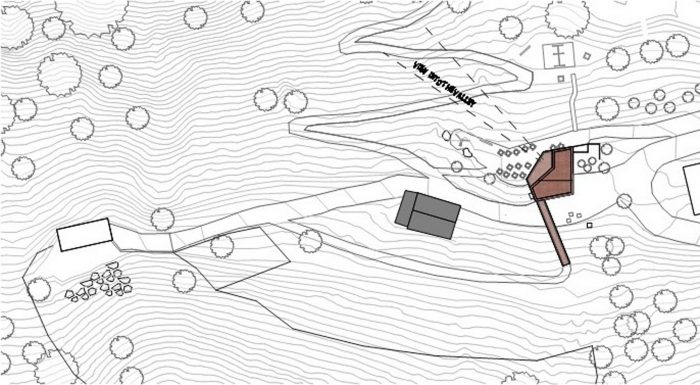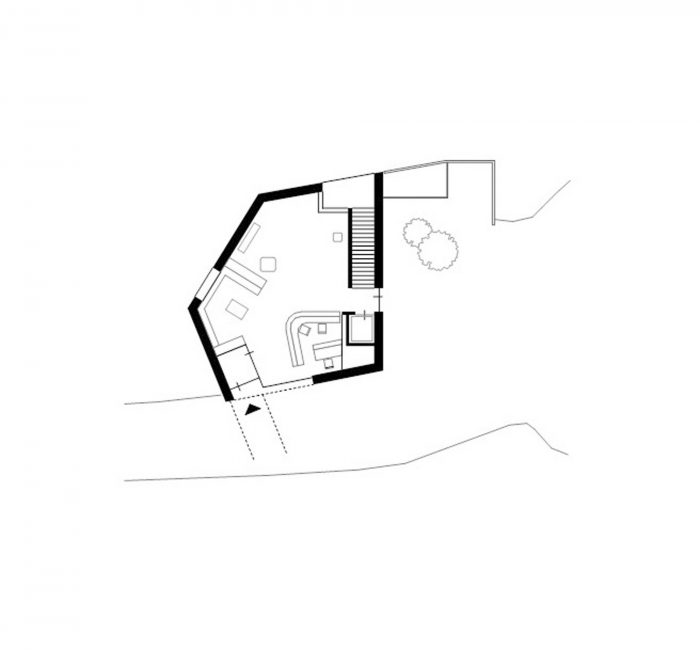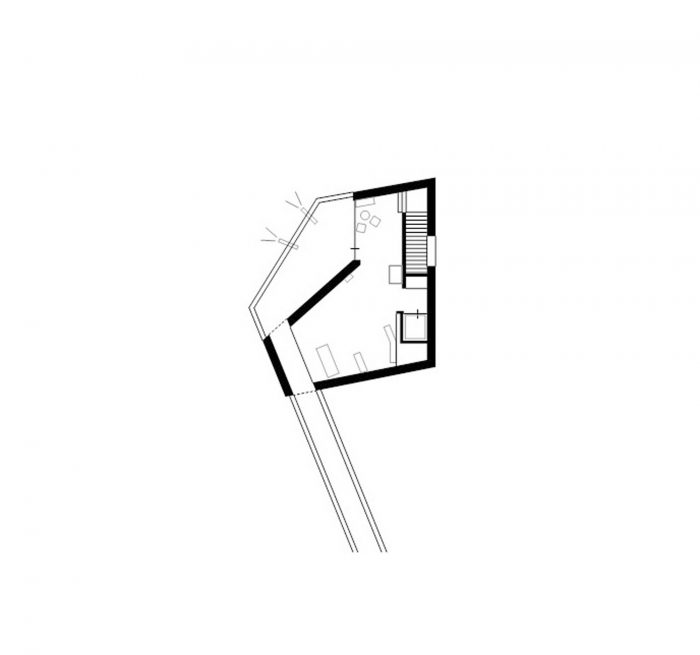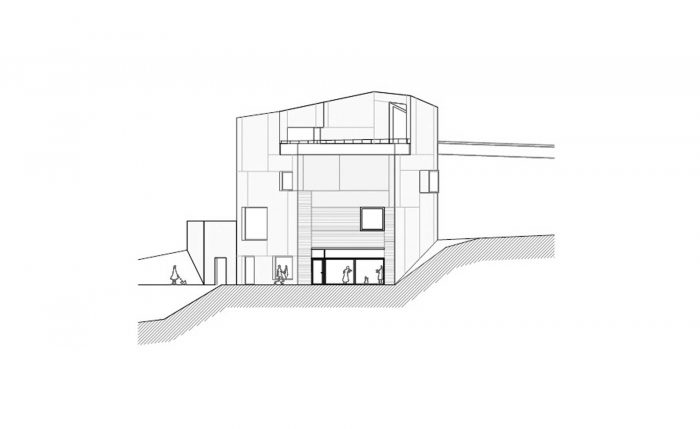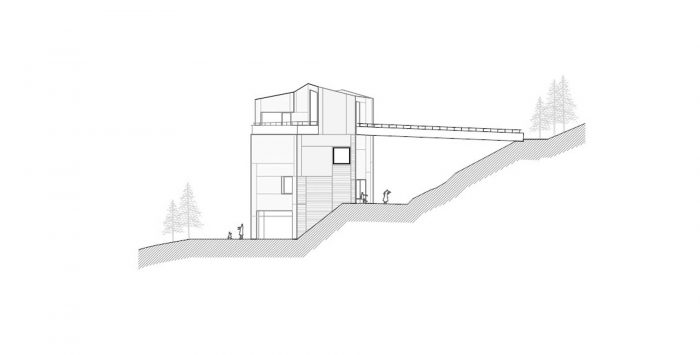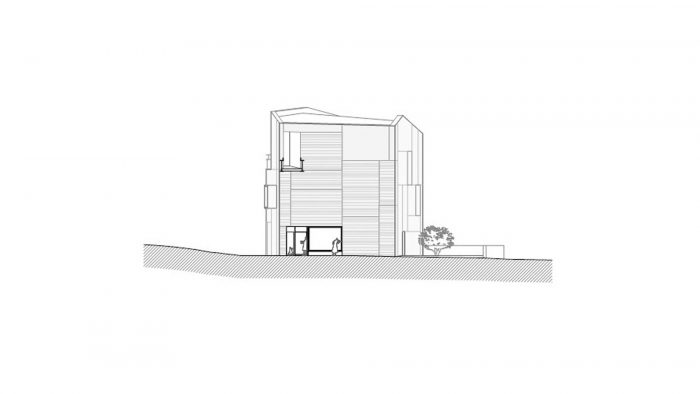在奥地利阿尔卑斯山的一个狭窄的山谷里,人们决定建造一个小型博物馆,讲述这个地区山羊被灭绝的故事和重新引进的过程。在室内展览的同时,还为7只山羊建造了一个室外围栏。
In a narrow valley in the Austrian alps, it was decided to build a small museum to tell the story of the extermination and the process of reintroduction of the ibex in this region. The indoor exhibition is completed with an outdoor enclosure for seven ibexes.
在一片林立的山坡上,你会看到一座通红的建筑,不知为何看起来像一座小城堡。这就是圣莱昂哈德的朱鹮博物馆。就在山谷中最古老的农舍之一旁边,几乎和以前的谷仓一样,用预制混凝土建造了一座塔状建筑,其下部是引用谷仓的木质表面。
Upon a wooded mountainside, you see a reddish building, somehow appearing like a small castle. It is the Ibexmuseum St.Leonhard. Right next to one of the oldest farmhouses of the valley, with nearly the same footprint of the old barn which was standing there, a towerlike building has been constructed in precast concrete, where the lower parts are quoting the wooden surface of the barn.
一座醒目的红色钢桥连接着塔楼的第三层和一旁的斜坡,在斜坡上你可以到达朱鹮的围栏。
A striking red steel bridge connects the third floor of the tower with the slope aside, on which you reach the enclosure of the ibex.
概念背景与策略。一座清晰的塔状建筑代表着一个地标性的建筑,从下面的小村庄可以看到它的理由。它的紧凑性,位置,以及混凝土外墙与粗糙木板的模板,可以看作是对老谷仓的记忆。
Concept Context and Strategy. A clear tower-like building representing a landmark has its reason in the site, which is visible from the small village below. Its compactness, the position, and the concrete façade with a formwork of rough wooden boards could be seen as a memory of the old barn.
事实上,这个室内和室外的 “展览 “的所有元素都分布在一个陡峭的斜坡上,并且对于老年人、身体残疾者或乘坐婴儿车的游客来说,应该是无障碍的,这也是原因之一,这导致了可能是独特的解决方案,即垂直组织的博物馆,游客从底部走过,直到顶部,并穿过一座桥进入自然。从字面上看,博物馆有助于 “爬山”,”面对面 “地看朱鹮。
The fact that all elements of this in- and outdoor „exhibition“ are spread on a steep slope, and should be accessible for old, physically disabled, or visitors with baby buggies, was also one of the reasons, which led to the perhaps unique solution of a vertically organized museum, where visitors walk through, from the bottom until the top and across a bridge into nature. The museum literally helps to „climb the mountains“ to see the ibex “face to face”.
建筑–材料与结构。建筑采用钢筋混凝土结构,外墙采用预制混凝土构件。窗框和桥体采用钢结构,颜色为红色,Terrazzofloors为红灰色,楼梯为橡木色。餐厅用石松木镶板,这是这个山区的典型木材。
Construction – Materials and Structure. The building is constructed in reinforced concrete, with prefabricated concrete elements as the facade. The window frames and the bridge are made of steel, coloured in red, Terrazzofloors in a reddish-grey, and the stairs in oak. The restaurant is paneled in stone pine, the typical wood of this mountainous area.
建筑师:Atelier Rainer Köberl
面积:367平方米
年份:2020年
照片:Lukas Schaller
客户:Gemeinde St. Leonhard im Pitztal
规划:ARGE Architekten Rainer Köberl& Daniela Kröss, Innsbruck
项目经理:DI Julian Gatterer
展览策划:Rath & Winkler Projekte für Museum und Bildung, Innsbruck
展览设计: himmel. Studio für Design und Kommunikation, Innsbruck
施工管理 : R&S Planbau Landeck
结构顾问:DI Georg Pfenniger Landeck
景观规划:ARGE Architekten Rainer Köberl& Daniela Kröss Innsbruck
电气规划 : Technisches Büro Schwienbacher Landeck
建筑服务规划 : Technisches Büro Pregenzer KG Prutz
城市 : Sankt Leonhard im Pitztal
国家:奥地利
Architects: Atelier Rainer Köberl
Area: 367 m²
Year: 2020
Photographs: Lukas Schaller
Client:Gemeinde St. Leonhard im Pitztal
Planning:ARGE Architekten Rainer Köberl& Daniela Kröss, Innsbruck
Project Manager:DI Julian Gatterer
Exhibition Planning:Rath & Winkler Projekte für Museum und Bildung, Innsbruck
Exhibition Design:himmel. Studio für Design und Kommunikation, Innsbruck
Construction Management:R&S Planbau Landeck
Structural Consultant:DI Georg Pfenniger Landeck
Landscape Planning:ARGE Architekten Rainer Köberl& Daniela Kröss Innsbruck
Electrical Planning:Technisches Büro Schwienbacher Landeck
Building Services Planning:Technisches Büro Pregenzer KG Prutz
City:Sankt Leonhard im Pitztal
Country:Austria


